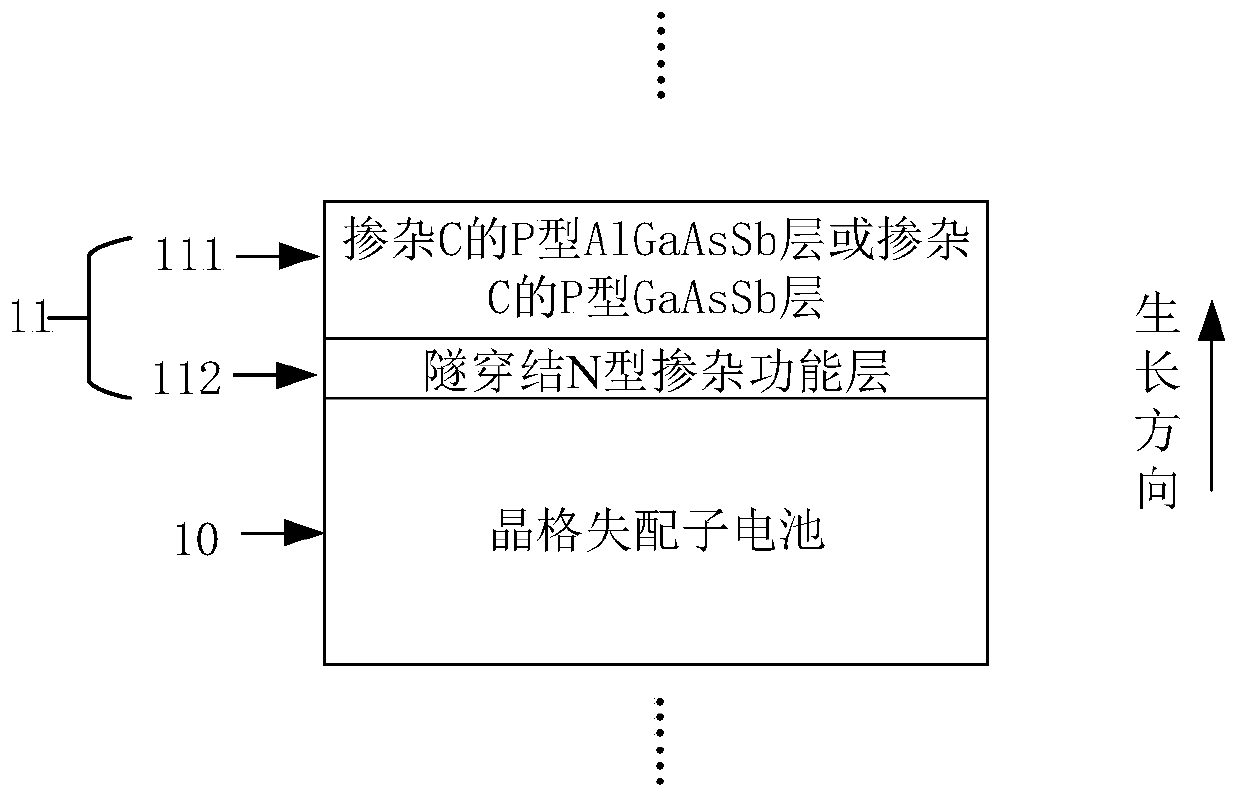Lattice-mismatched multi-junction solar cell structure
A solar cell and lattice mismatch technology, which is applied in circuits, photovoltaic power generation, electrical components, etc., can solve problems such as lattice mismatch, affecting solar cell efficiency, dislocations, etc., and achieve the effect of high tunneling current
- Summary
- Abstract
- Description
- Claims
- Application Information
AI Technical Summary
Problems solved by technology
Method used
Image
Examples
Embodiment Construction
[0031] As mentioned in the background technology section, the p-type doped functional layer in the tunnel junction in the prior art usually adopts the p-type (Al) InGaAs layer doped with C, however, the p-type (Al) InGaAs layer doped with C in the prior art ) InGaAs is prone to dislocation defects, which affect the efficiency of solar cells.
[0032] The inventor finds that the root cause of the above phenomenon is:
[0033] At present, the lattice-matched triple-junction battery that has been commercialized on a large scale focuses on the complete adaptation of the lattice constants between the materials of each sub-cell, so that the bandgap combination of its sub-cells is 1.89eV / 1.41eV / 0.67eV, resulting in the bandgap of the medium-sized battery. The difference between the gap (1.41eV, InGaAs) and the bottom cell (0.67eV, Ge) is large, so that the photocurrent of the bottom cell is too large, and the infrared part of the solar spectrum other than 880nm is not fully utilized,...
PUM
| Property | Measurement | Unit |
|---|---|---|
| Thickness | aaaaa | aaaaa |
| Bandgap | aaaaa | aaaaa |
| Bandgap | aaaaa | aaaaa |
Abstract
Description
Claims
Application Information
 Login to View More
Login to View More - R&D
- Intellectual Property
- Life Sciences
- Materials
- Tech Scout
- Unparalleled Data Quality
- Higher Quality Content
- 60% Fewer Hallucinations
Browse by: Latest US Patents, China's latest patents, Technical Efficacy Thesaurus, Application Domain, Technology Topic, Popular Technical Reports.
© 2025 PatSnap. All rights reserved.Legal|Privacy policy|Modern Slavery Act Transparency Statement|Sitemap|About US| Contact US: help@patsnap.com



